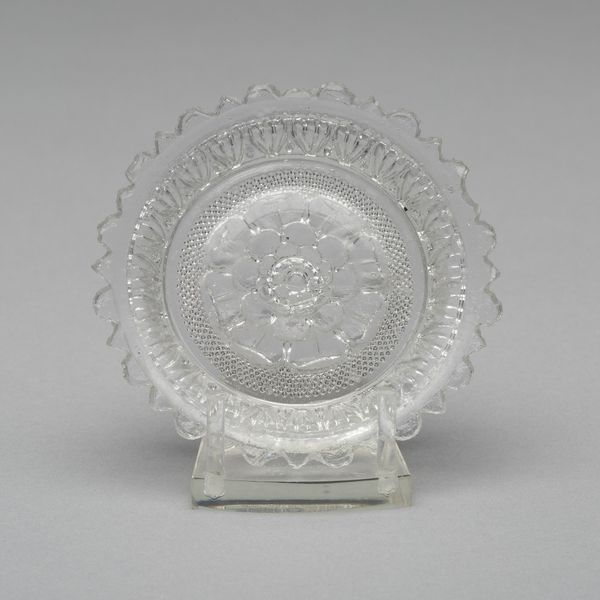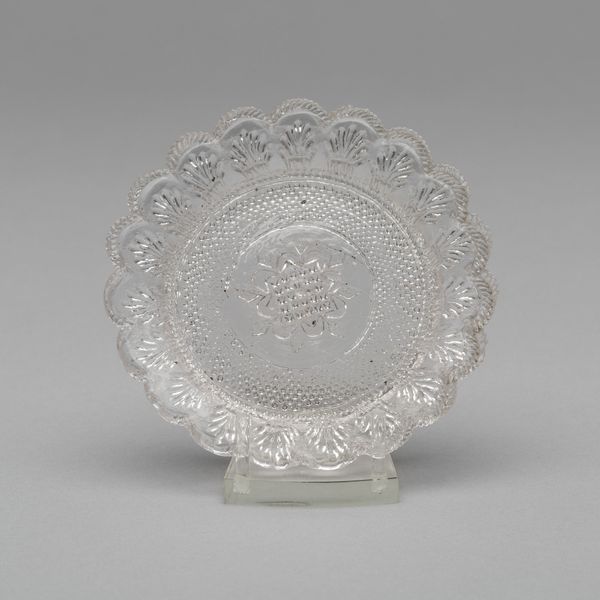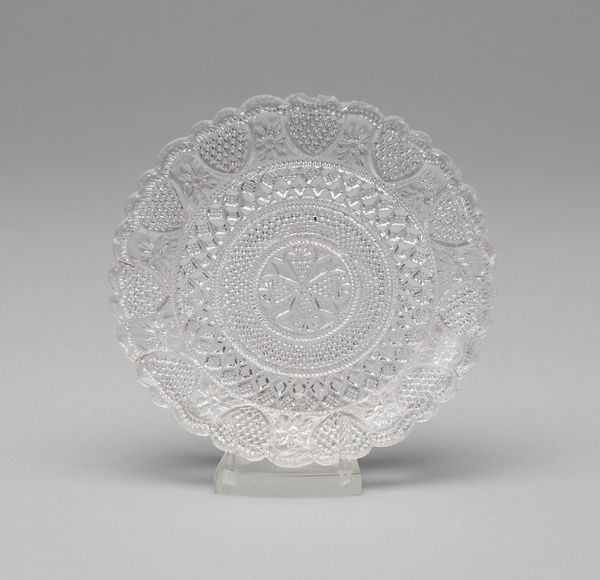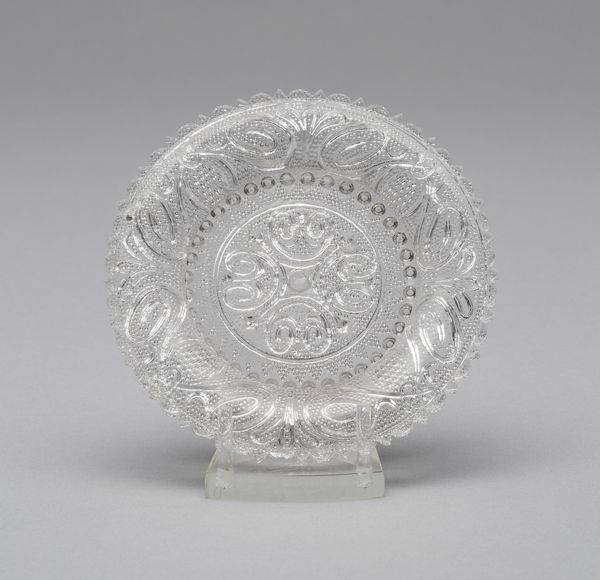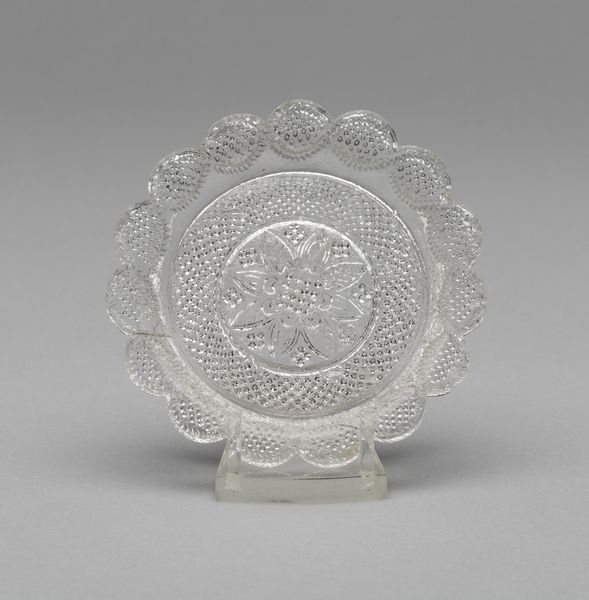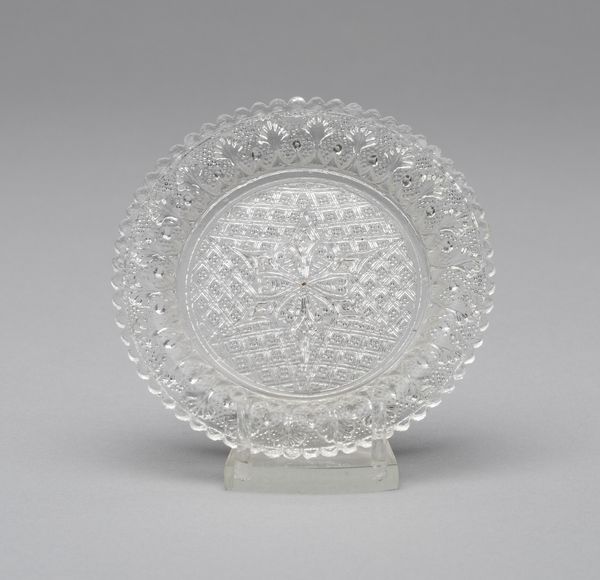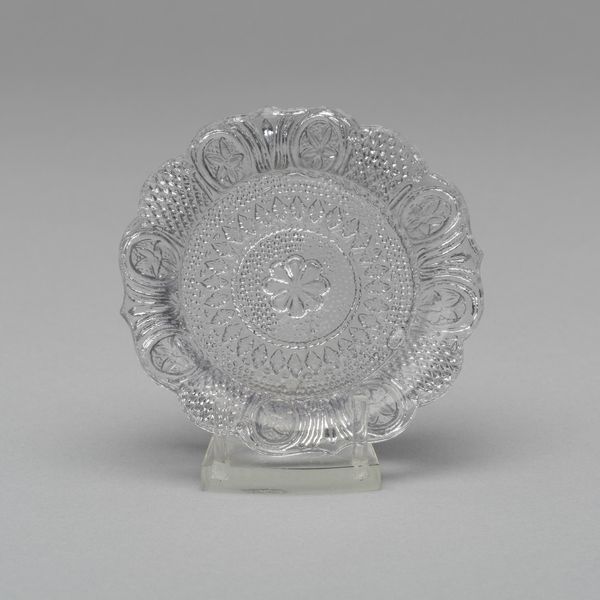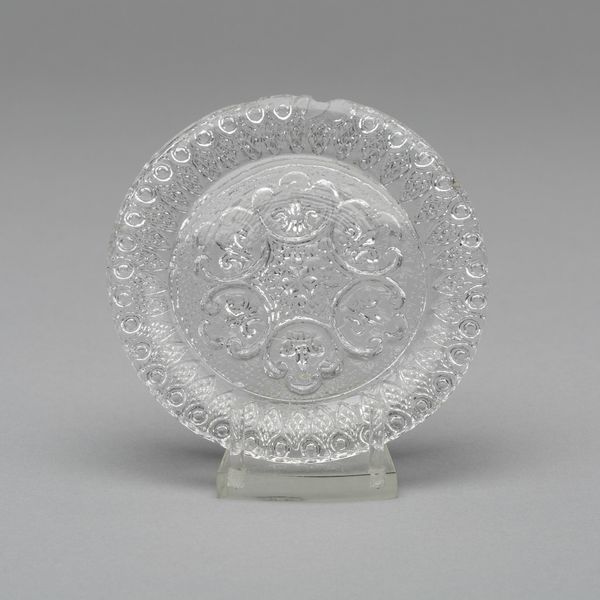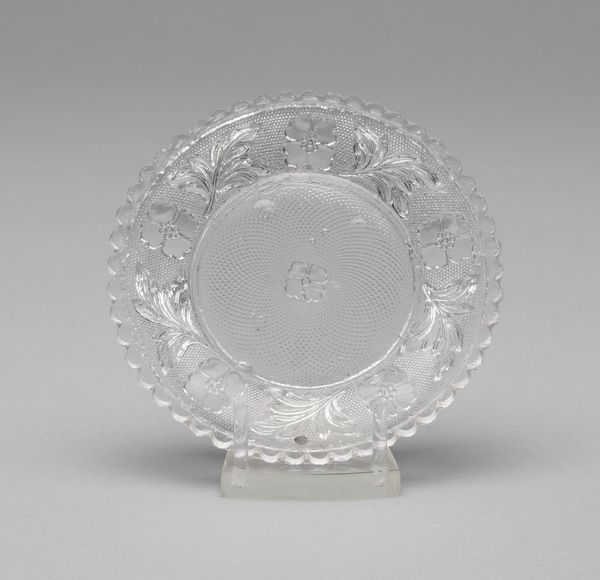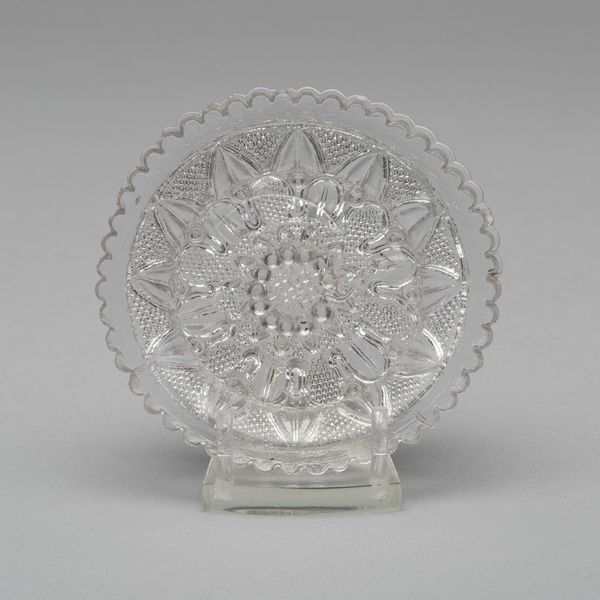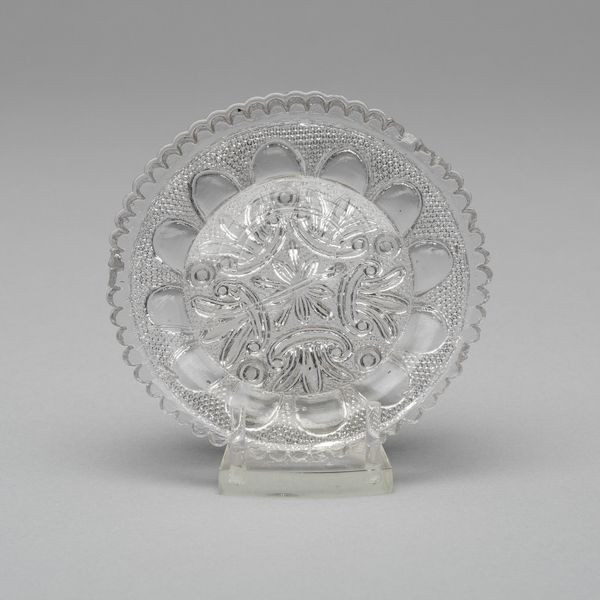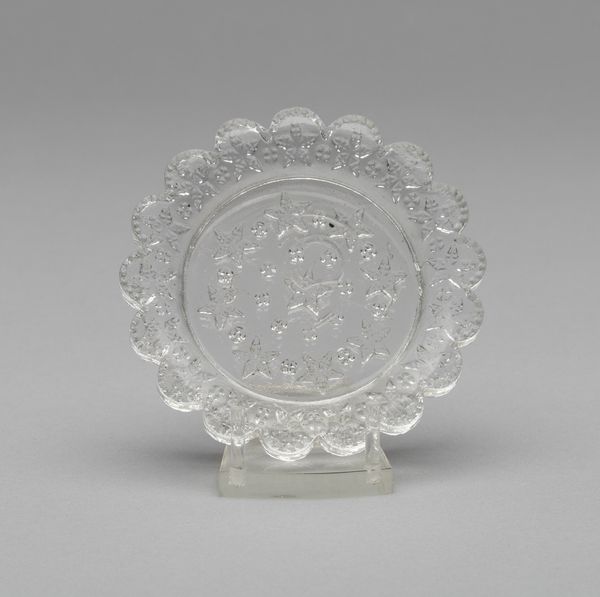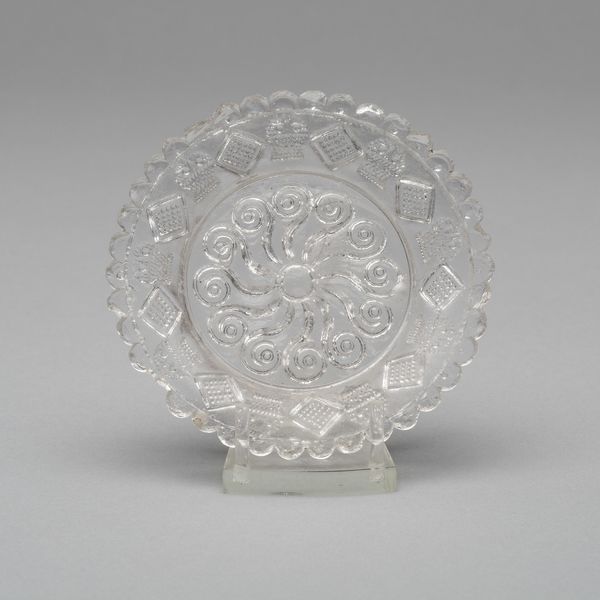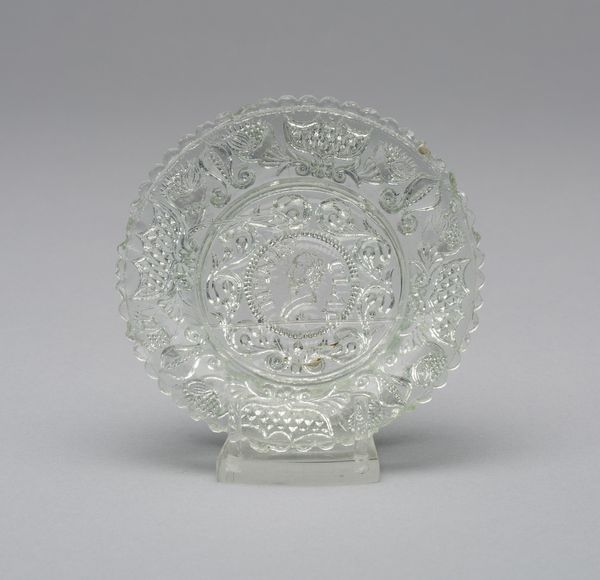
glass
#
glass
#
3d shape
#
decorative-art
Dimensions: diam. 8.3 cm (3 1/4 in.)
Copyright: Public Domain
Editor: Here we have an intriguing piece, simply titled "Cup Plate," created around 1826 or 1827 by an anonymous artist. It's made of glass and part of the decorative arts. I’m immediately drawn to the intricacy of the design; how would you interpret this piece focusing on its visual and material elements? Curator: Focusing on its form, the transparency and refractive qualities of the glass are paramount. The artist, although anonymous, clearly possessed a sophisticated understanding of mold-making. Notice the concentric rings of patterned texture; they draw the eye inwards. Consider the relationship between the smooth, clear glass and the densely patterned areas, especially in relation to how light interacts with each distinct texture. How does this play with your sense of visual depth and tactile interest? Editor: It's fascinating how the light interacts, creating such a subtle visual depth with a simple, clear medium. I didn't fully appreciate the tactile element you pointed out; it feels like I should be experiencing this by touch, too. Is there anything further to decode within its composition? Curator: Indeed. Delving deeper, note the interplay between radial symmetry and subtle asymmetry, especially noticeable in the floral and foliate elements towards the center. Semiotically, the patterns are of great interest, as there are floral elements arranged as decoration, combined with geometrical elements. What can you say about that formal relationship, then? Editor: I see a balance and counterpoint in the piece; one that invites the eye to consider both the precision of manufactured decorative wares combined with more free-flowing aesthetic of decorative elements. Curator: Precisely. Reflecting on this, the formal rigor combined with decorative flair offers a glimpse into early 19th century design sensibilities.
Comments
No comments
Be the first to comment and join the conversation on the ultimate creative platform.
